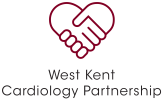August 18, 2020 - by WKCPAdmin
This treatment may be required if a coronary angiogram has revealed that there are severe narrowings in one or more of the coronary arteries and where it is not possible to treat the condition with either medications or angioplasty/stenting.
September 01, 2020 - by WKCPAdmin
This procedure involves open-heart surgery where blood vessels taken from the legs, chest or forearm are used to bypass the narrowed or blocked arteries.
- by WKCPAdmin
In a pressure wire study, a special wire with a pressure transducer in the tip is passed through the narrowing and a drug may be given to maximize blood flow through the artery.
August 21, 2020 - by WKCPAdmin
Computed tomography (CT) of the heart uses special x-ray equipment to produce pictures of the coronary arteries to determine if they are blocked or narrowed.
August 19, 2020 - by WKCPAdmin
An echocardiogram, or ‘echo’, is a scan used to look at the heart and nearby blood vessels.
August 17, 2020 - by WKCPAdmin
An electrocardiogram (ECG) is a simple test that can be used to check your heart’s rhythm and electrical activity.
- by WKCPAdmin
An exercise stress test is used to determine how well your heart responds during times when it’s working its hardest.
August 18, 2020 - by WKCPAdmin
These procedures are usually performed as ‘open-heart surgery’ and are very effective treatments often resulting in a complete resolution of symptoms.
August 21, 2020 - by WKCPAdmin
An implantable cardioverter-defibrillator (ICD) is a small battery-powered device placed in your chest to monitor your heart rhythm and detect irregular heartbeats: an ICD can deliver electric shocks via one or more wires connected to your heart to fix an abnormal heart rhythm.
August 17, 2020 - by WKCPAdmin
This is a test to examine the blood supply to your heart muscle under stress conditions (similar to exercise) to see if there are any problems with the blood vessels supplying your heart muscle.

